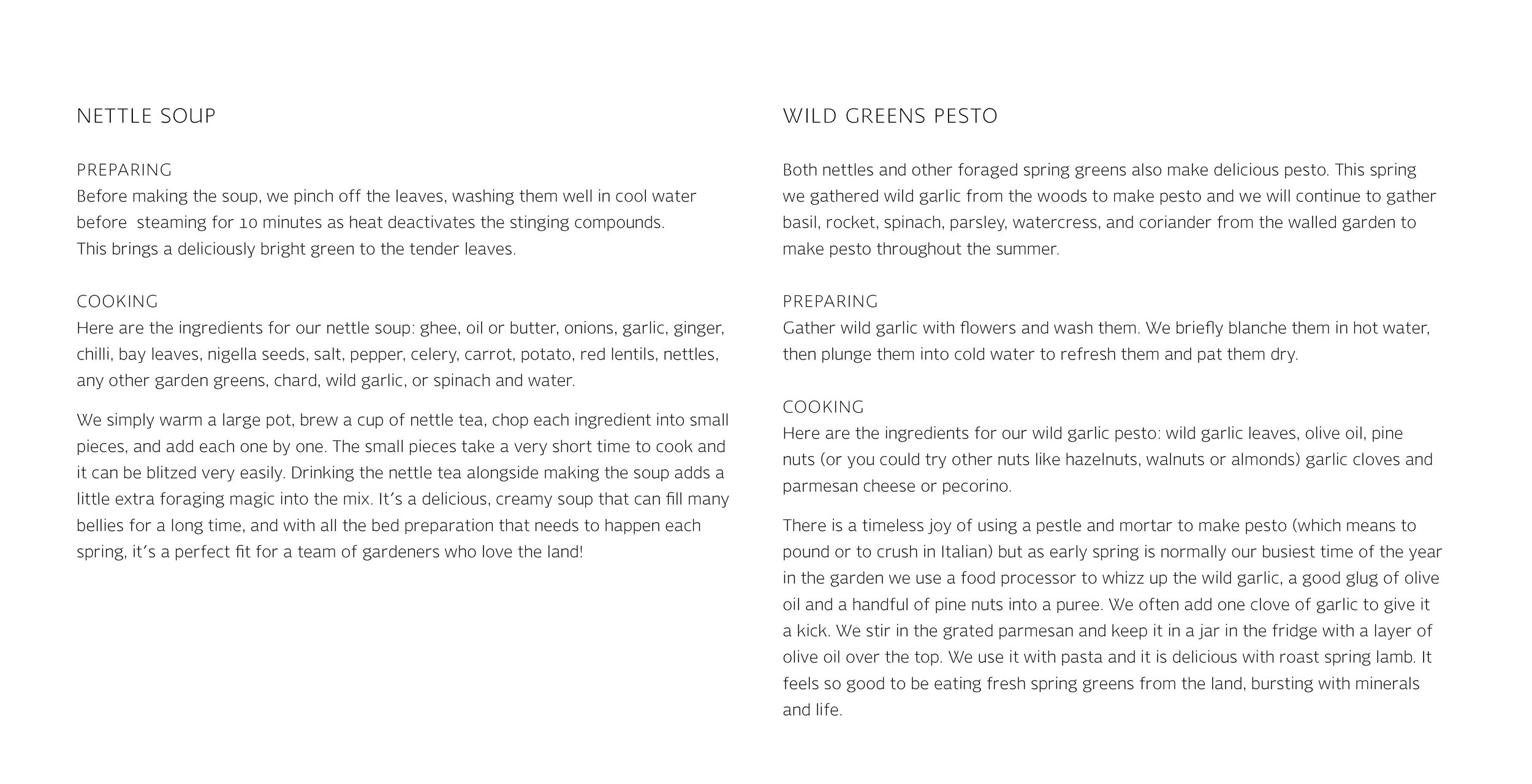


Rhubarb and spring greens gathered in the early hours.

Spinach, sown at the end of last summer and picked this spring (left). Primrose petals and white borage flowers – both beautiful and edible (right).

Boxes of spring greens, herbs, rhubarb and tulips ready to be delivered to local clients at the beginning of lockdown.



Wild garlic carpets the woods in spring. We pick armfuls of leaves and flowers to eat, and bring the flowers in tiny vases into the house. It is so good for your health: anti-bacterial, containing vitamins A, C, calcium, iron, phosphorous, sodium and copper and possibly anti-viral, it may also reduce blood pressure.

We love wild garlic pesto (left) and gathering nettles (right). Nettles act as a host for butterfly larvae like the small tortoiseshell and the peacock. The leaves are full of nitrogen for composting and we use them for nettle teas. The seeds are a nutritious food source for birds, shrews and other wildlife.


We love edible flowers in our salads; primroses (left) and colourful sweet rocket, calendula and borage flowers (right).

Early summer this year we gathered lilacs to make delicious cordial inspired by Nicola Hart, the founder of the delicious kefir www.aguademadre.co.uk (middle). A delicate lilac watercolour by botanical artist Emma Tenant (www.katiepertwee.com) (right).


Warren hybrid and Blue Orpington hens and Richard, the white Leghorn cockerel.

Let me down! Lilac with her Polish Bantam.


One broody Blue Orpington from the front and the fluffy back.

Blue Orpington and Warren hybrid hens on each side of Ray the white Sussex cockerel (since eaten by a fox).

Charlie McCormick's New Love


















